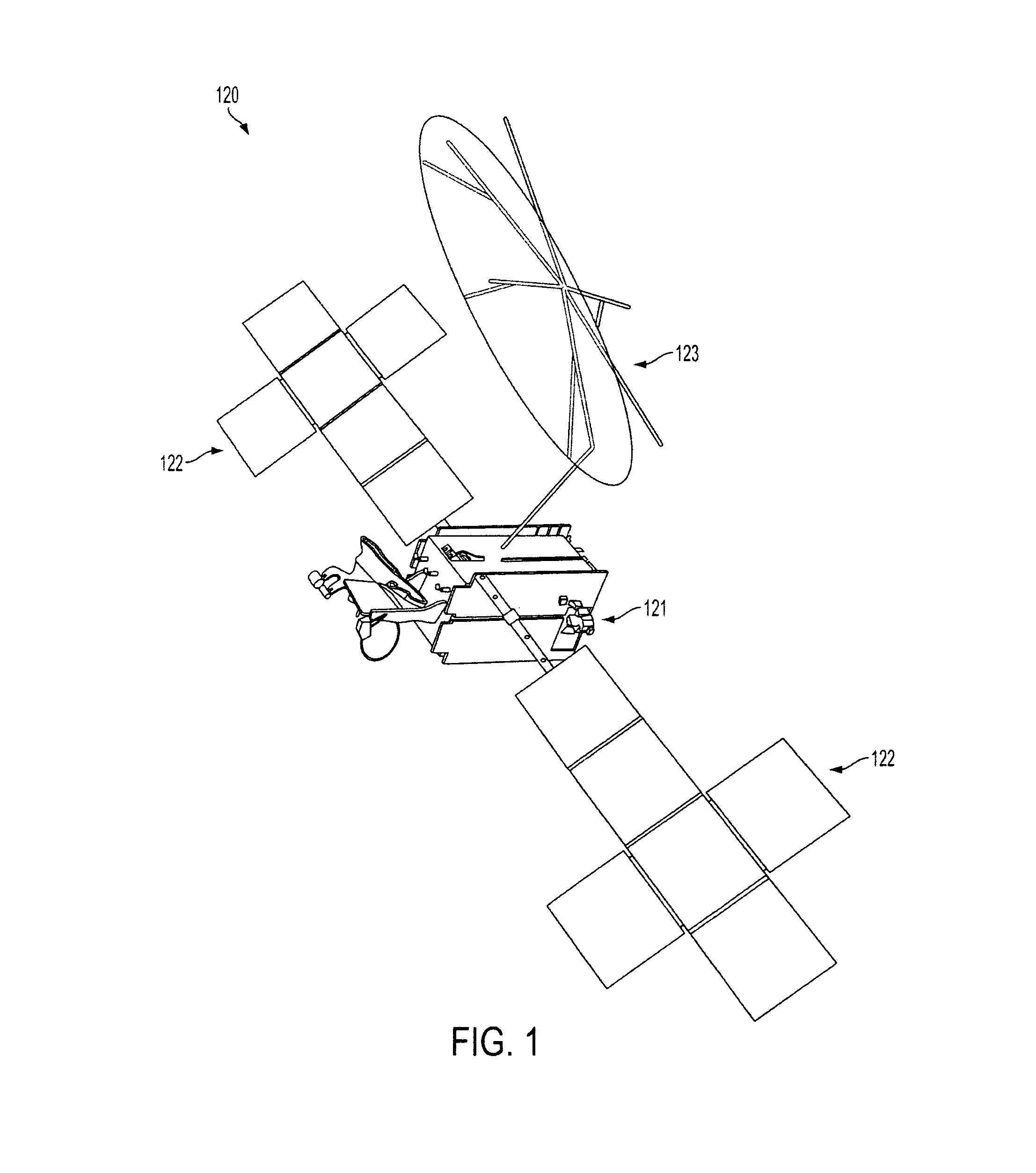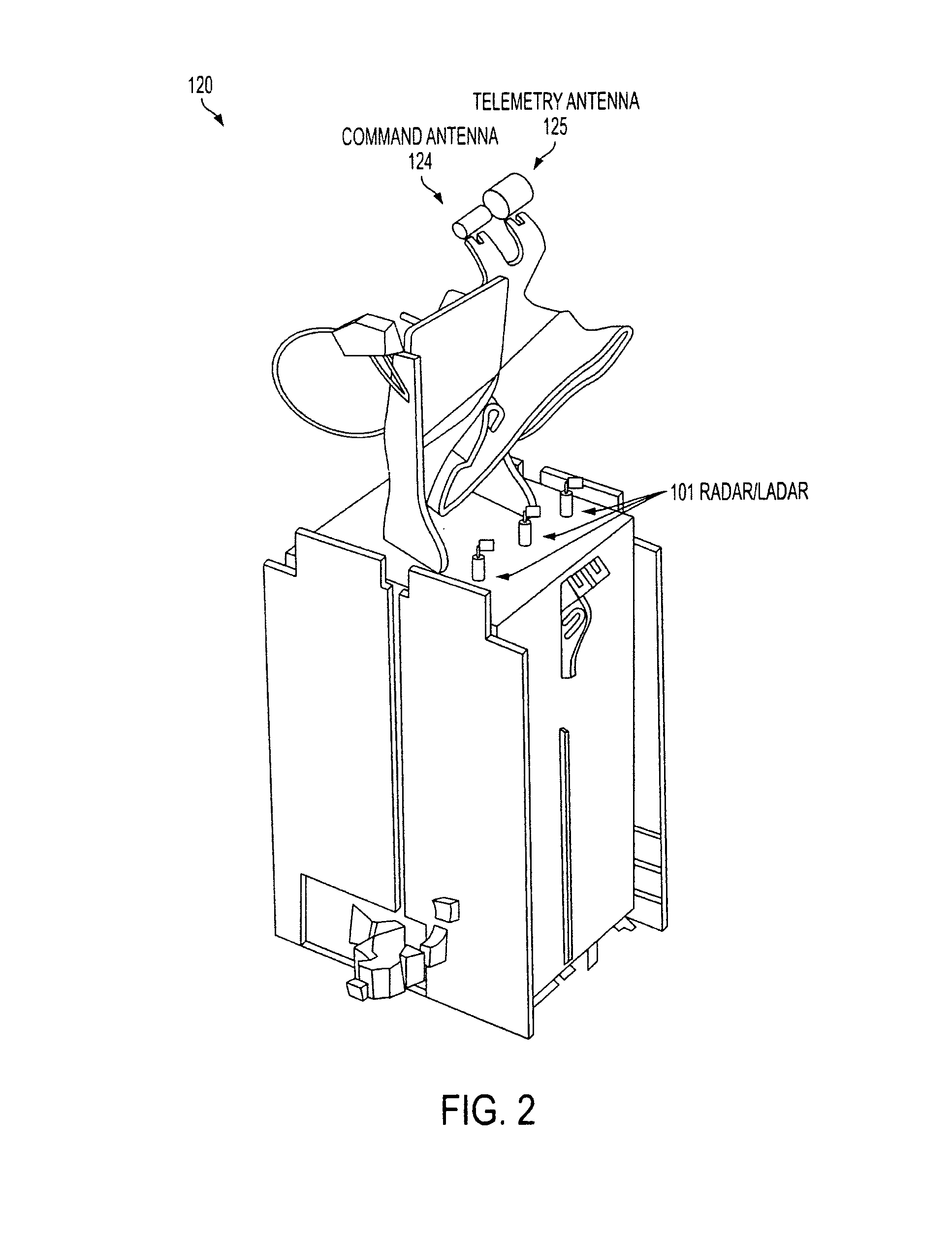Autonomous satellite orbital debris avoidance system and method
a technology of autonomous satellites and avoidance systems, applied in the direction of instruments, cosmonautic vehicles, and reradiation, etc., can solve the problems of affecting the detection efficiency of cosmonautic debris
- Summary
- Abstract
- Description
- Claims
- Application Information
AI Technical Summary
Benefits of technology
Problems solved by technology
Method used
Image
Examples
Embodiment Construction
[0041]A modern high capacity satellite 120 used for communications and broadcast purpose(s) is shown in FIG. 1 which can be adapted for use with the invention. Such satellites typically include functional equipment including one or more satellite thrusters 121, one or more power sources 122, as well as one or more antennae 123. It can be appreciated that the satellite 120 can include a number of systems, including systems associated with the primary function of the satellite, such as communication, broadcast, observation, and other systems, not shown. Some of such systems and functional equipment can cooperate with or be part of an orbital debris avoidance system according to the invention.
[0042]An enlargement of the main body of the satellite is shown in FIG. 2 and illustrates a command antenna 124 and a telemetry antenna 125 for communication with a ground control station(s) and one possible location of three orbital tracking devices 101, namely radars or ladars or other similar s...
PUM
 Login to View More
Login to View More Abstract
Description
Claims
Application Information
 Login to View More
Login to View More - R&D
- Intellectual Property
- Life Sciences
- Materials
- Tech Scout
- Unparalleled Data Quality
- Higher Quality Content
- 60% Fewer Hallucinations
Browse by: Latest US Patents, China's latest patents, Technical Efficacy Thesaurus, Application Domain, Technology Topic, Popular Technical Reports.
© 2025 PatSnap. All rights reserved.Legal|Privacy policy|Modern Slavery Act Transparency Statement|Sitemap|About US| Contact US: help@patsnap.com



